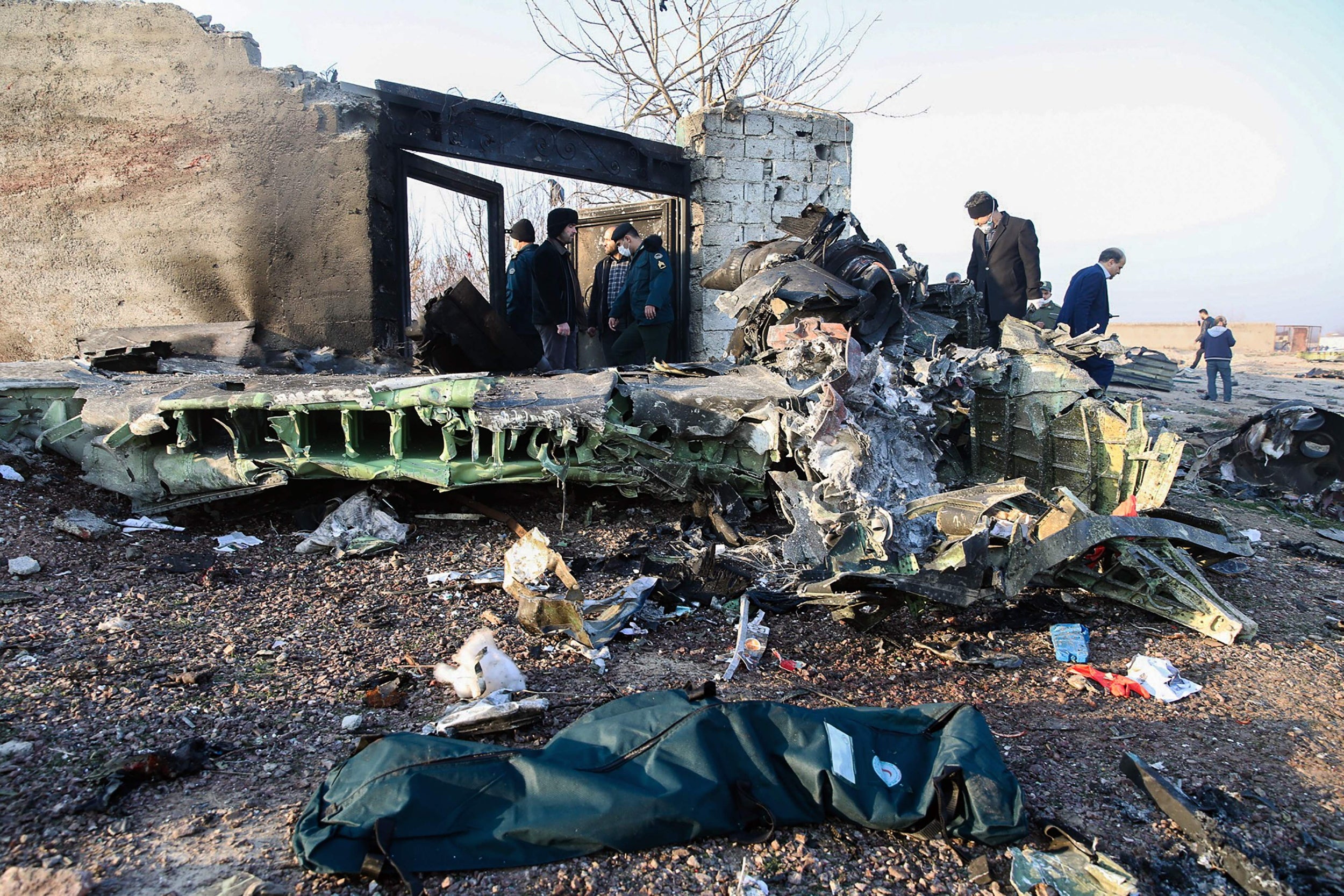This website uses cookies so that we can provide you with the best user experience possible. Cookie information is stored in your browser and performs functions such as recognising you when you return to our website and helping our team to understand which sections of the website you find most interesting and useful.

No sooner had the news broken this morning that a Ukraine International Airlines (UIA) flight, PS752, had crashed shortly after its departure from Tehran for Kiev, than speculation erupted on social media that the plane must have been brought down by a missile or some other act of foul play.
After all, this was the same night that the Iranian authorities had elected to target US military facilities in Iraq with missile strikes in response to the killing of General Qasem Soleimani on 3 January.
The Iranian authorities must have been fearful of any tit-for-tat response from the Americans, meaning that any aircraft deviating even slightly from its intended course could be deemed to pose a threat and become the target of a trigger-happy anti-aircraft gunner. (There are memories here of Korean Air flight 007, which was shot down by a Soviet fighter when it veered away from its planned route between Alaska and Seoul in 1983, with the loss of 269 lives.)
But, for now, it's all speculation. And I'd prefer to avoid speculating until more details become apparent.
That said, if not an act of foul play, intended or otherwise, it is a cruel coincidence that two of the countries most associated with previous missile attacks were to be the protagonists in the loss of PS752.
Created with Sketch.
Created with Sketch.
1/18
People stand near the wreckage after a Ukrainian plane carrying 176 passengers crashed near Imam Khomeini airport in Tehran
ISNA/AFP via Getty
2/18 People and rescue teams are pictured amid bodies and debris
All 176 people on board a Ukrainian passenger plane were killed when it crashed shortly after taking off, Iranian state media reported
ISNA/AFP via Getty
3/18 One of the engines
State news agency IRNA said 167 passengers and nine crew members were on board the aircraft operated by Ukraine International Airlines
Iran Press via Reuters
4/18
Rescue teams work at the scene
AFP via Getty
5/18
Passengers' belongings
West Asia News Agency via Reuters
6/18
Members of the International Red Crescent collect bodies of victims
EPA
7/18
Rescue teams work amidst debris
AFP via Getty
8/18
A relative of a victim reacts at Boryspil International Airport, outside Kiev
Reuters
9/18
AP
10/18
ISNA/AFP via Getty
11/18
AP
12/18
Part of the wreckage
Iran Press via Reuters
13/18
West Asia News Agency via Reuters
14/18
AP
15/18
AP
16/18
AP
17/18
Officials inspect the wreckage
EPA
18/18
AP
1/18
People stand near the wreckage after a Ukrainian plane carrying 176 passengers crashed near Imam Khomeini airport in Tehran
ISNA/AFP via Getty
2/18 People and rescue teams are pictured amid bodies and debris
All 176 people on board a Ukrainian passenger plane were killed when it crashed shortly after taking off, Iranian state media reported
ISNA/AFP via Getty
3/18 One of the engines
State news agency IRNA said 167 passengers and nine crew members were on board the aircraft operated by Ukraine International Airlines
Iran Press via Reuters
4/18
Rescue teams work at the scene
AFP via Getty
5/18
Passengers' belongings
West Asia News Agency via Reuters
6/18
Members of the International Red Crescent collect bodies of victims
EPA
7/18
Rescue teams work amidst debris
AFP via Getty
8/18
A relative of a victim reacts at Boryspil International Airport, outside Kiev
Reuters
9/18
AP
10/18
ISNA/AFP via Getty
11/18
AP
12/18
Part of the wreckage
Iran Press via Reuters
13/18
West Asia News Agency via Reuters
14/18
AP
15/18
AP
16/18
AP
17/18
Officials inspect the wreckage
EPA
18/18
AP
Most recently, in 2015, in the highest profile shoot-down of the modern era, it was Malaysia Airlines flight MH17 that was brought down whilst overflying Ukraine by a Buk missile. In an instant, 298 innocent lives were lost; Russian-backed rebels are believed to be responsible.
Then again, in 2001, and only shortly after the 9/11 attacks, Ukraine itself was held responsible for the shooting down a Siberia Airlines flight en route from Tel Aviv to Novosibirsk. It was a mistake – a tragic one – as the Ukrainian forces were engaged in a military training exercises and had locked on to what they believed to be a drone; inadvertently they had actually locked on to the Siberia Airlines flight and 78 people were to lose their lives as a result.
Ukraine never officially accepted responsibility, but they did cough up compensation to the victims' families. And an Iranian aircraft was itself the target of a missile strike back in 1988 when the USS Vincennes shot down Iran Air flight 655, en route from Bandar Abbas to Dubai, allegedly mistaking the Airbus for a fighter jet. All 290 passengers and crew died.
In the aftermath of the subsequent bombing of Pan Am 103 over Lockerbie in December 1988, those who considered Iran responsible for the bombing (and who question Libyan involvement) moot that it could well have been a retaliatory act against the US for the destruction of Iran Air flight 655.
But, for all that, it's too early to state what happened to PS752.
Was it brought down by a missile? Or, as initially claimed by the Ukrainian authorities (albeit subsequently retracted), was a major technical malfunction responsible?
If that latter, it just happened to occur on an aircraft between two states sadly associated with loss of aircraft due to military error, on a night when Iran was likely to be most sensitive to being the target of an aerial attack.
Philip Baum is Visiting Professor, Aviation Security at Coventry University, and Editor-in-Chief, ‘Aviation Security International’



 Africana55 Radio
Africana55 Radio 

